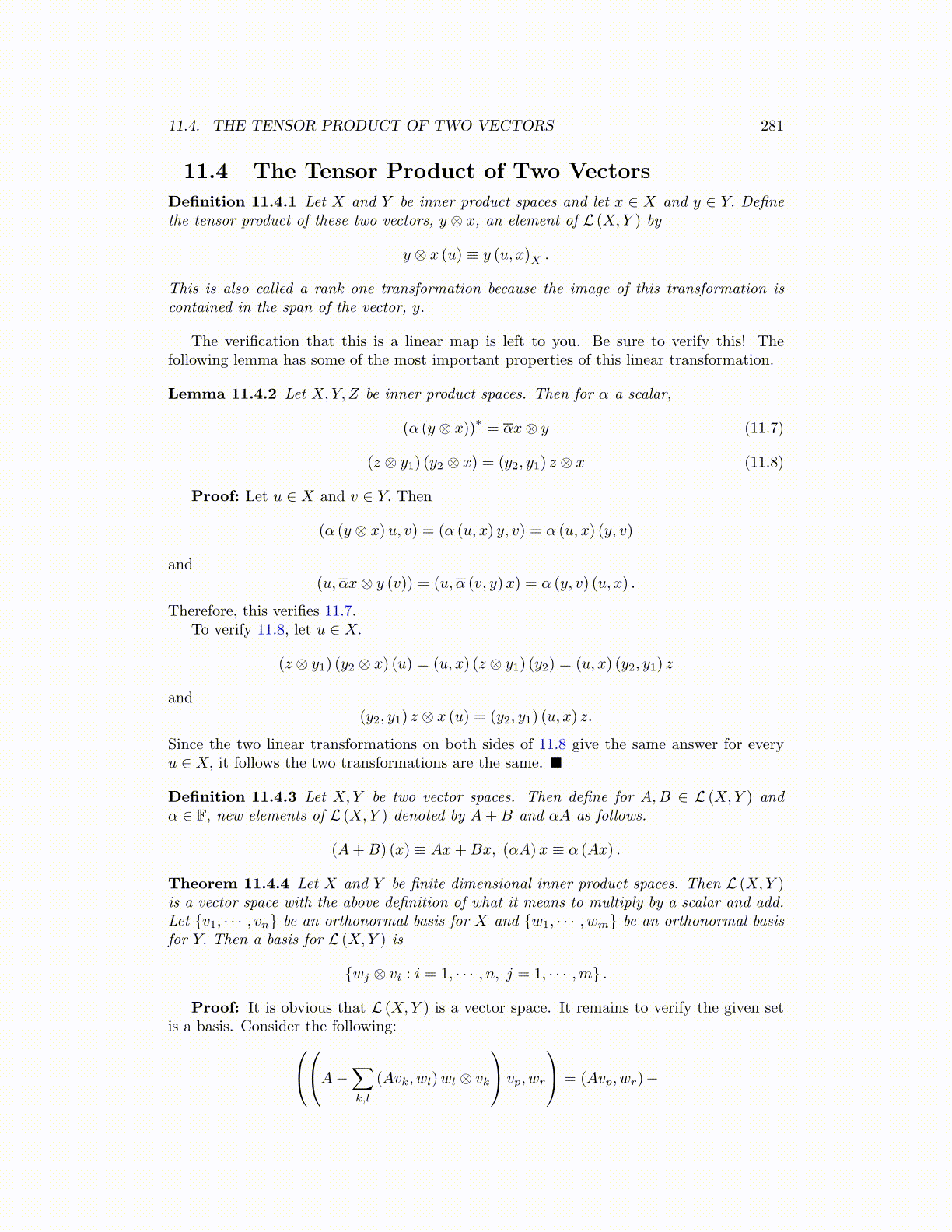
11.4. THE TENSOR PRODUCT OF TWO VECTORS 281
11.4 The Tensor Product of Two Vectors
Definition 11.4.1 Let X and Y be inner product spaces and let x ∈ X and y ∈ Y. Definethe tensor product of these two vectors, y ⊗ x, an element of L (X,Y ) by
y ⊗ x (u) ≡ y (u, x)X .
This is also called a rank one transformation because the image of this transformation iscontained in the span of the vector, y.
The verification that this is a linear map is left to you. Be sure to verify this! Thefollowing lemma has some of the most important properties of this linear transformation.
Lemma 11.4.2 Let X,Y, Z be inner product spaces. Then for α a scalar,
(α (y ⊗ x))∗= αx⊗ y (11.7)
(z ⊗ y1) (y2 ⊗ x) = (y2, y1) z ⊗ x (11.8)
Proof: Let u ∈ X and v ∈ Y. Then
(α (y ⊗ x)u, v) = (α (u, x) y, v) = α (u, x) (y, v)
and(u, αx⊗ y (v)) = (u, α (v, y)x) = α (y, v) (u, x) .
Therefore, this verifies 11.7.To verify 11.8, let u ∈ X.
(z ⊗ y1) (y2 ⊗ x) (u) = (u, x) (z ⊗ y1) (y2) = (u, x) (y2, y1) z
and(y2, y1) z ⊗ x (u) = (y2, y1) (u, x) z.
Since the two linear transformations on both sides of 11.8 give the same answer for everyu ∈ X, it follows the two transformations are the same. ■
Definition 11.4.3 Let X,Y be two vector spaces. Then define for A,B ∈ L (X,Y ) andα ∈ F, new elements of L (X,Y ) denoted by A+B and αA as follows.
(A+B) (x) ≡ Ax+Bx, (αA)x ≡ α (Ax) .
Theorem 11.4.4 Let X and Y be finite dimensional inner product spaces. Then L (X,Y )is a vector space with the above definition of what it means to multiply by a scalar and add.Let {v1, · · · , vn} be an orthonormal basis for X and {w1, · · · , wm} be an orthonormal basisfor Y. Then a basis for L (X,Y ) is
{wj ⊗ vi : i = 1, · · · , n, j = 1, · · · ,m} .
Proof: It is obvious that L (X,Y ) is a vector space. It remains to verify the given setis a basis. Consider the following:A−
∑k,l
(Avk, wl)wl ⊗ vk
vp, wr
= (Avp, wr)−